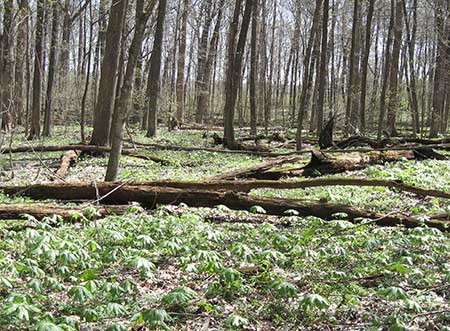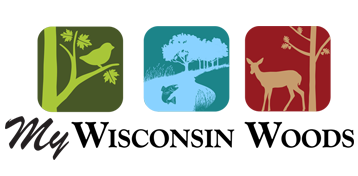
In the Driftless, Diversity Abounds
The Driftless region is full of diversity: a diversity of people, jobs, and landscapes. Hill and dale, wet and dry, wooded and open — the Drfitless is also the epitome of plant community diversity.
Which of these three woodland communities are on your property?

Oak Woodland; A dry woods
Dominant trees are white oak, bur oak, and black oak. There may be openings in the tree canopy, allowing more sunlight to hit the ground. Wildflowers include rough sunflower, shooting star (Dodecatheon), upland boneset, and leadplant.
Central Hardwoods (Dry-mesic Woods): A moderately moist woods
Most common woodland community combining the drier and more mesic (moderately moist) plants. You will find a mix of white oak, red oak, shagbark hickory, bitternut hickory, red maple, sugar maple, basswood, white ash, black cherry and American elm.
There can be different dominant trees depending the slope’s aspect (which direction it faces). For example, oak-hickory woods dominate south-facing hillsides, oak-cherry woods dominate north-facing hillsides, and oak-elm woods can dominate either north- or south-facing slopes. Common wildflowers are enchanter’s nightshade, large-flowered bellwort, and geranium.
Northern Hardwoods (Southern Mesic Woods): A moist woods
This plant community is found on the most fertile soil (e.g., valley or north-facing slope), dominated by sugar maple. Wildflowers include bloodroot, trillium, spring beauty, may apple, and Virginia waterleaf.
